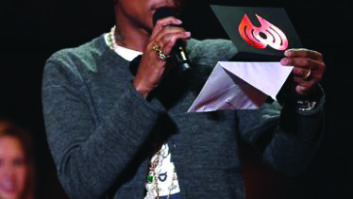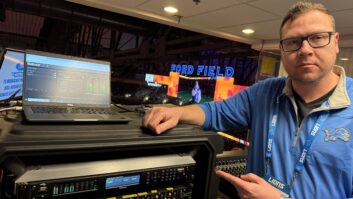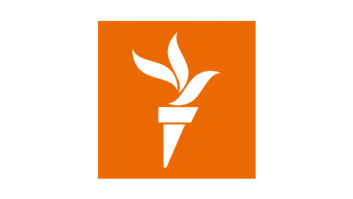It’s been a long time coming, but we finally have a proposed rule making initiative that will give the AM service some long overdue help of real significance. The NAB submitted an NPRM in July to allow AM stations the ability to augment and improve service within their primary coverage area using FM translators. The proposal may pose various technical challenges and could have gone farther by offering more far-reaching options, but at least it gets the ball rolling in the right direction.
The commission has dealt with similar proposals in the past, going back as far as 30 years, but each time the idea has been rejected. Only a few unique cases in Alaska and one in the southeast involving Cuban interference have won special FCC authority to translate AM over FM.
FIGHTING UPHILL
For years AM stations in many parts of the country have battled poor ground conductivity and nighttime interference, making it difficult to cover their markets properly. Before FM became dominant, translators for such stations certainly were justified and could have helped a lot, especially at night. In those days the commission was much more interested in advancing FM than protecting AM.
It rejected the previous petitions by citing the notion that “AM propagation suffers no gaps in coverage,” like those found with FM. That idea may have had some justification in the good old days before noise pollution and increased interference of all kinds rendered acceptable and consistent AM reception a major struggle within the service areas of all AM stations. The time for real relief as contained in the NAB NPRM is overdue.
For too many reasons we hate to think about, the vitality of the AM service has slowly deteriorated with every passing year. Unless an AM station adequately covers a market of decent size with a good signal both day and night, its chances of success and survival are severely compromised. The few FCC rule changes aimed at AM improvement that have been implemented have done little to slow the advancing decay.
The NRSC mask filter reduced sideband splatter and did help second adjacencies. The “ratchet” clause reduced a small amount of nighttime interference from modified facilities. And the expanded-band initiative moved a few stations off cluttered channels.
However it appears that most stations getting an expanded-band frequency have not been all that interested in retiring their old channels. A group of them are petitioning the commission to keep both, completely undoing the intent of the original initiative. It seems giving up something for AM improvement is not all that appealing.
FROM BAD TO WORSE
AM stations everywhere continue to lose audience to the forces of increasing noise interference, FM and satellite radio, the Internet and other alternative media delivery services. The plight of daytime-only AMs has worsened considerably in the face of such challenges. It will only get worse next year when the country adopts four additional weeks of extended daylight savings hours from March to November.
Clear-channel blowtorches expand their coverage at night dramatically but most all other AM stations have forever suffered the penalty of restricted nighttime primary coverage because of skywave interference. Most lose a considerable percentage of their daytime service area at night, especially the 1 kW local channel Class C stations, some of which lose up to 90 percent. Clearly these stations, which account for almost a quarter of the entire band, need help and they need it now if they are to endure and survive.
The NAB proposal calls for daytime-only stations to finally get the equivalent of full-time service by allowing them to operate their new FM translators on a 24/7 basis. That part of the NPRM will require additional rule changes. This is a huge improvement and represents their only opportunity to finally be granted effective full-time status. Daytimers in many markets will be able to fully serve their communities like all other stations.
PROBLEMS AND SHORTCOMINGS
The proposal also calls for the new FM translator 1 mV/m contour coverage to be limited to the lesser of the existing AM 2 mV/m contour or a 25 mile radius from its transmitter site. Translator power output and ERP levels would presumably only be limited to meet those constraints. This seems reasonable for stations in populous areas but doesn’t allow those in more isolated markets enough reach to serve listeners in outlying areas served by those markets. Hundreds of stations in the Midwest and west fall into that category and deserve perhaps a 0.5 mV/m contour and 50 mile limit.
Translator antenna designs and site selection for stations using AM directional antennas may present complications under this proposal. There also may be problems for those who propose significantly elevated translator locations under the existing archaic method of predicting FM coverage for licensing using the 2 to 10 mile HAAT profile.
Consider the case of a station wanting to better serve a suburb 20 miles from its AM transmitter with an FM translator from a tall ridge. The area is in an adjacent valley on the fringe of the 2 mV/m AM contour. Determining the translator’s optimum location and antenna design to be able to keep its theoretical 1 mV/m coverage completely within the AM 2 mV/m contour will likely be challenging.
The NAB NPRM makes no specific mention of how AM stations filing for FM translators will demonstrate, let alone verify, that the 1 mV/m translator contour will not exceed their AM 2 mV/m contour in any direction. Presumably the AM contour mapping will be based on theoretical antenna efficiency and M3 ground conductivity values, or by AM directional Proof of Performance measurements where available.
As any radio engineer knows, predicting FM coverage contours using the present 2 to 10 mile HAAT profile-licensing rule is fraught with error and in many cases is not even remotely accurate. Determining a more realistic 1 mV/m FM contour for this proposal would certainly seem appropriate. The time has arrived for the commission to fully adopt the use of terrain shielding and computer-generated Longley-Rice terrain profiles to determine real coverage in all FM allocations issues, including this proceeding.
A FAIR ADVANTAGE
The basis of the NAB proposal is fairly drawn to establish the FM translator option only to enhance AM coverage within existing AM service areas. Extending service beyond that into unserved areas would be prohibited. Existing FM services including translators and LPFM stations would be protected.
However in the larger markets, few open FM channels exist to afford AM stations this opportunity. The NAB should have included the provision to allow any local AM station desiring an FM translator to trump any existing translator that imports a distant signal where no open FM channels are available. Enhanced local service should always take precedence and be awarded the advantage in contested proceedings.
LOOKING FORWARD
Except for the clear-channel powerhouses and legacy stations with solid full-time coverage, the AM service is under siege, including far too many marginal stations with dwindling audiences and revenues. If AM is going to be competitive in the digital era and make the best use of the burgeoning HD opportunity, the present inventory of stations populating the AM band will simply have to be reduced.
In previous discussions, I’ve advocated the FCC consider creative proposals to allow a reasonable and equitable method for current owners of marginal AM stations to retire their licenses and get something of value in return. Those include trading them for LPFM replacements where allocations rules permit and/or selling their allocated protection to an existing AM station that wishes to expand service and implement HD.
Assuming the NAB NPRM for AM translators on FM is adopted, I predict that quite a few of the AM owners who add FM translators to replicate most of their AM coverage will soon realize their AM facility has become expendable. The translators will become essentially LPFM stations that can stand on their own. The AM transmitters can be shut off and the licenses surrendered.
The FCC should anticipate such a development in this rule making and consider including an incentive for candidate AM station owners to move in this direction. You could call it a new kind of AM improvement that reduces clutter and interference so those facilities that remain can better leverage the advantages of HD with improved coverage and reduced interference. The more I think about it, the more I’m convinced it’s a win-win proposal for the industry.
LONG LIVE AM
The present AM service is predominately made up of news, talk, sports and religious formats that continue to provide valuable local service to their communities. When civil and natural emergencies strike an area, AM radio has always risen to the occasion as the first choice for the majority of listeners. Many will be able to do a better job of serving those communities with the addition of FM translators. Others may find that converting their AM operations to FM translators or LPFM services in the years to come will serve their interests much better.
Allowing AM stations a more level playing field with their FM brethren is now more than ever fully justified. While the NAB proposal will provide AM some long overdue relief of real consequence, more will have to be done to enhance and preserve the AM service as the HD rollout moves forward. Some of the allocations and design issues may be challenging, but the effort will be well worth it. The commission and the entire industry need to embrace this proposal and expedite its adoption.






